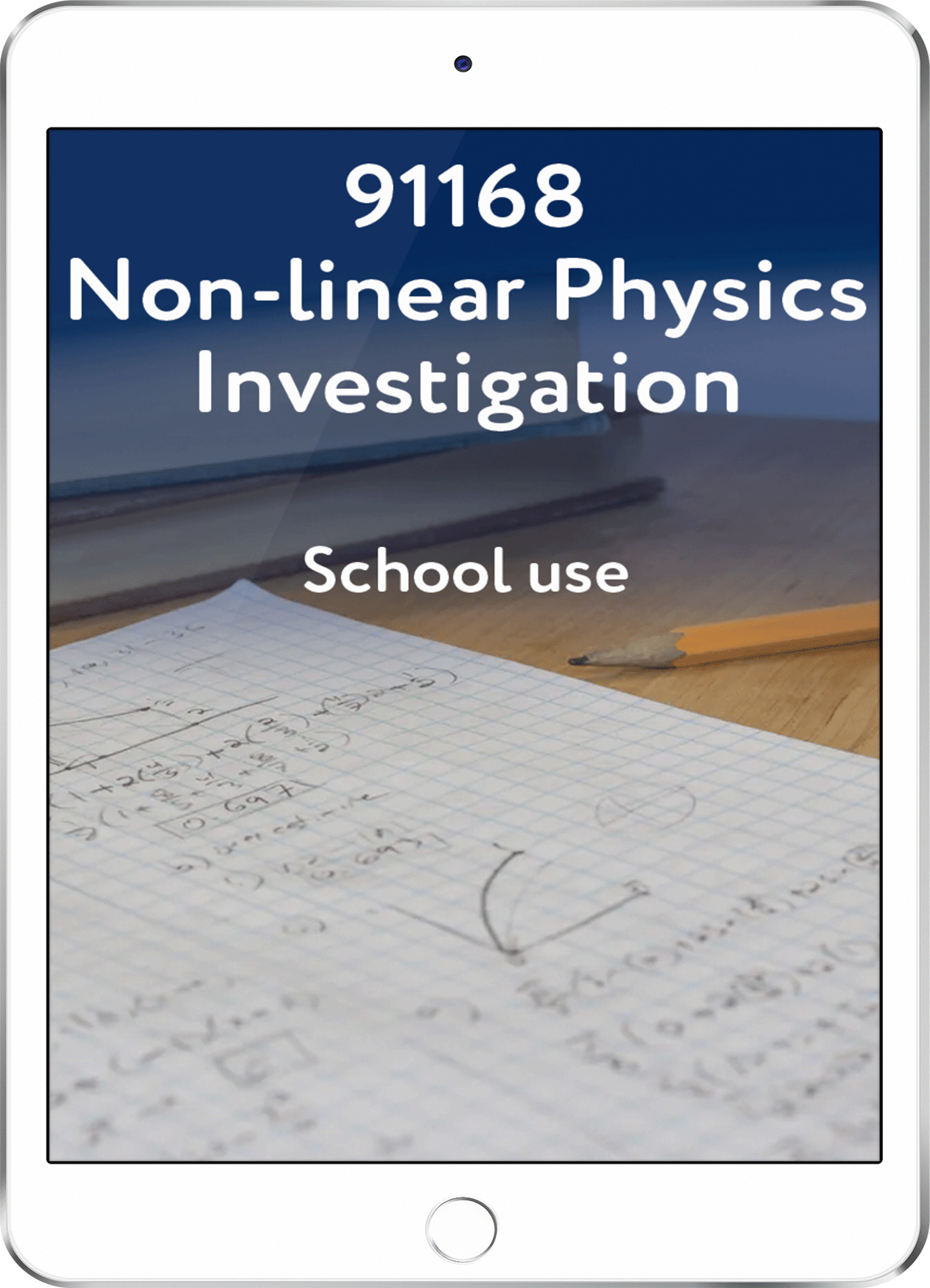91168 Non-linear Physics Investigation - School Use
91168 Non-linear Physics Investigation - School Use
LearnWell Digital
This version of the resource is for school use. Teachers can facilitate, and load students from their class. If you are not using this resource in class, you should purchase the home use version.
Couldn't load pickup availability
This resource covers the things you need to know and be able to do for the NCEA Level 2 Achievement Standard 91168 (Physics 2.1) Carry out a practical physics investigation that leads to a non-linear mathematical relationship.
What you'll learn
When you carry out a practical investigation in physics you’ll need to:
- decide on a purpose for your investigation
- plan your investigation
- gather and record the data
- process and interpret that data
- draw a conclusion in relation to your original purpose
- write a discussion.
In earlier science courses you’ve probably had a go at some or all of these steps already. But up until now, any physics investigations you’ve carried out are likely to have been limited to experiments that relate to linear mathematical relationships, i.e. where there is a straight-line relationship between two variables.
In this course, however, we’re focusing on investigations that will lead to non-linear relationships. This is where there is not a straight-line or direct relationship between our two variables.
Common non-linear relationships that apply in physics are, where k is a constant and x and y are the two variables:
- a square relationship (y = kx2)
- a square root relationship (y = k√x)
- an inverse relationship (y = k/x)
- an inverse square relationship (y = k/x2).
In this resource you’ll learn how to:
- plan an investigation that will allow you to gather valid, reliable data leading to a non-linear relationship
- minimise errors when taking measurements
- process and graph the data you collect
- transform a non-linear graph so you can identify the relationship between two variables
- write a conclusion and discussion.
LearnWell Digital resources put the learner at the centre. Using almost any device, students can easily work at a pace that suits them through interactive, scaffolded learning and activities.
You can find out more on the information page about our LearnWell Digital resources.

